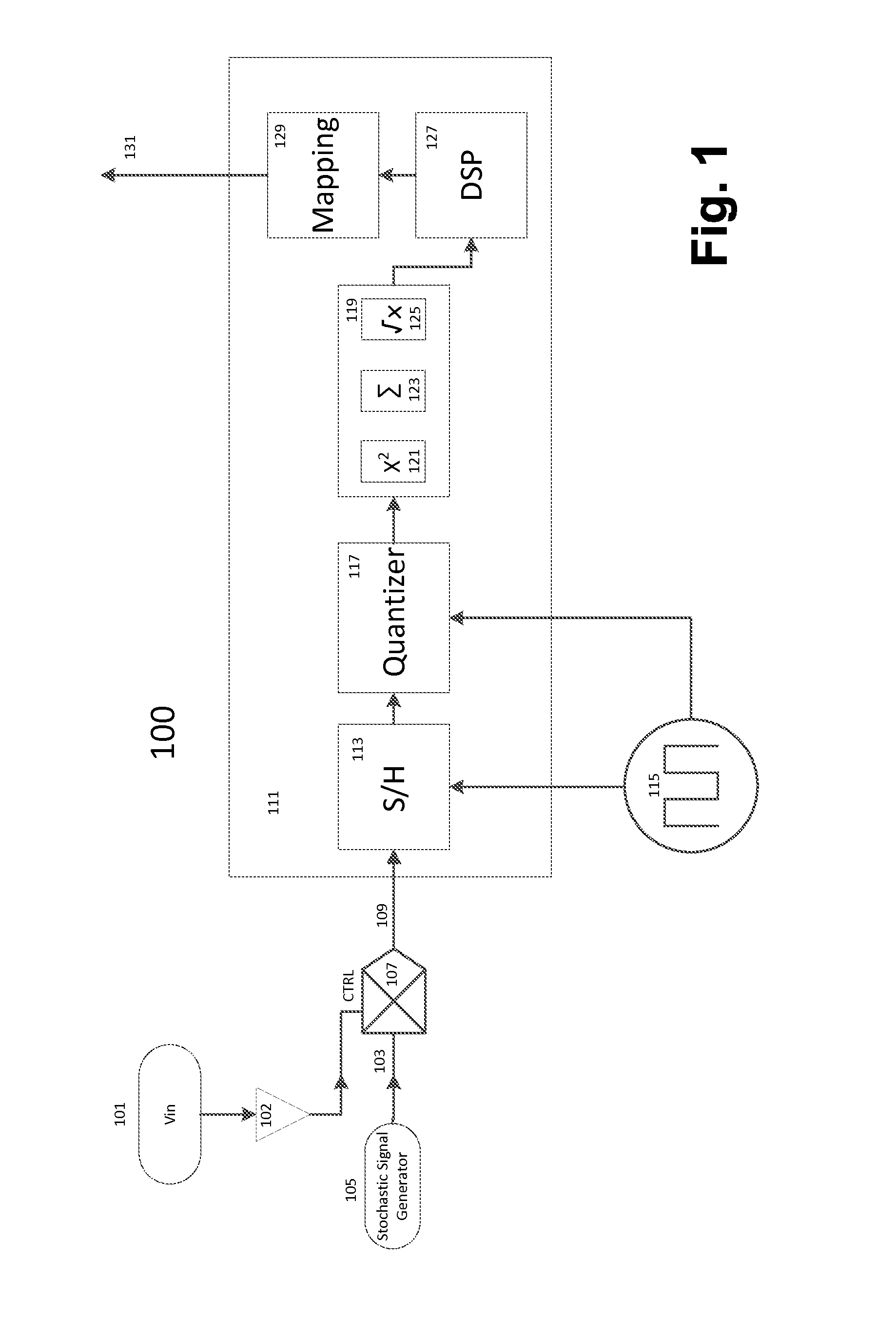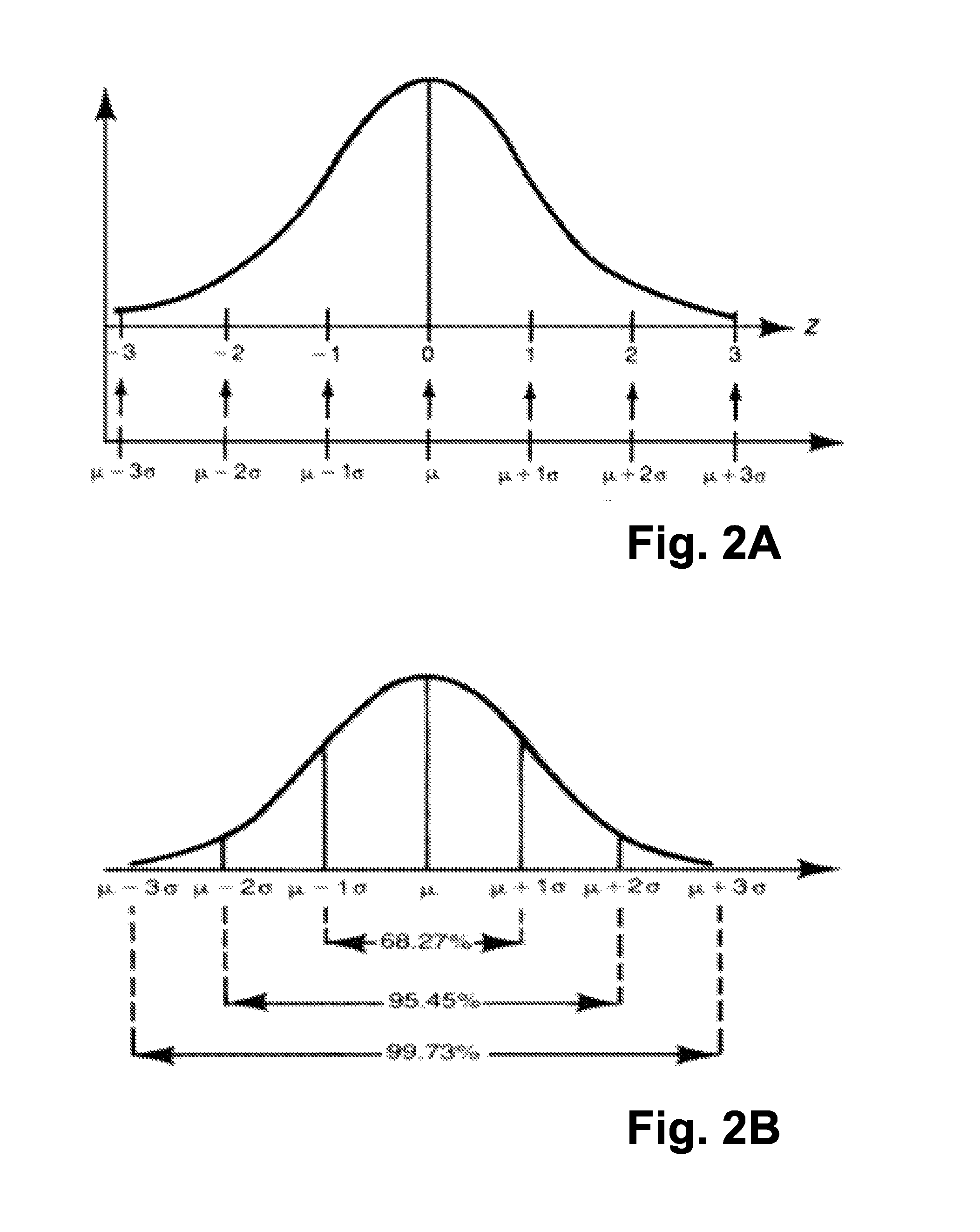Stochastic encoding in analog to digital conversion
a technology of stochastic encoding and digital conversion, applied in the direction of stochastic conversion, digital-analog convertor, physical parameter compensation/prevention, etc., can solve the problems of severe signal degradation or signal loss, noise in the conversion process, output signal,
- Summary
- Abstract
- Description
- Claims
- Application Information
AI Technical Summary
Benefits of technology
Problems solved by technology
Method used
Image
Examples
Embodiment Construction
[0010]The stochastic signal discussed herein may be exemplified in one embodiment by a white normalized noise, meaning a noise signal fitting a Gaussian normal curve. A Gaussian normal curve is typically represented by the following formula:
[0011]f(x)=1σ2πⅇ-(x-μ)22σ2
[0012]In the Gaussian normal formula above, a represents the signal's standard deviation; σ2 represents the signal's variance; and μ represents the signal's mean.
[0013]For a normal distribution, the signal's statistical standard deviation is equal to the Root Means Square value of the signal, f(x), meaning σ=RMS. As a result of this relationship, the invention provides high levels of accuracy when there is no DC component to the noise signal, or the DC component is small and may be considered negligible. The Root Means Square, sometimes called a “quadratic mean,” can measure the magnitude of a varying quantity, wherein the quantity can be error. The RMS value may be calculated for either a continuous waveform or f...
PUM
 Login to View More
Login to View More Abstract
Description
Claims
Application Information
 Login to View More
Login to View More - R&D
- Intellectual Property
- Life Sciences
- Materials
- Tech Scout
- Unparalleled Data Quality
- Higher Quality Content
- 60% Fewer Hallucinations
Browse by: Latest US Patents, China's latest patents, Technical Efficacy Thesaurus, Application Domain, Technology Topic, Popular Technical Reports.
© 2025 PatSnap. All rights reserved.Legal|Privacy policy|Modern Slavery Act Transparency Statement|Sitemap|About US| Contact US: help@patsnap.com



